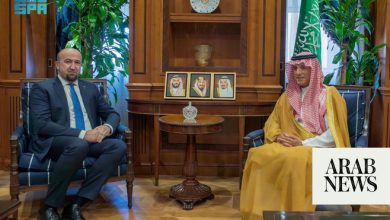Man dies in flood as Makkah is lashed by storm

DUBAI: Not even a decade ago, a trip to experience Saudi Arabia’s historic sites and culture would have been unthinkable for most. Over the past few years, thanks largely to Crown Prince Mohammed bin Salman’s Vision 2030 reform agenda, the Kingdom has opened to tourists, amid a multitude of other transformations on the business and social fronts.
There has been a dramatic shift in tourism numbers for the Gulf nation since it launched its e-visa program in 2019. Since then, Saudi Arabia registered 94 million visits in 2022, a 93 percent increase compared to 2021, resulting in a tourism spend of SR185 billion ($49 billion).
This rapid tourism growth is due to expanding visa initiatives, which now include 57 nations and two special administrative regions, compared to the initial 49 countries at the program’s launch.
HIGHLIGHTS
- The Kingdom’s expanding visa initiatives now include 57 nations and two special administrative regions.
- New countries in the e-visa pool include Albania, Kyrgyzstan, Maldives, South Africa, and Uzbekistan.
- Travel and tourism counts for 4.5 percent of Saudi Arabia’s GDP, marking an increase from three percent in 2019.
Abdullah Al-Dakhil, a spokesperson at the Saudi Tourism Authority, told Arab News: “Saudi Arabia’s ongoing visa announcements since 2019 have been a significant step toward the Kingdom becoming a must-visit tourism destination, with millions of travelers from right across the world taking advantage of the changes.”
The Kingdom is now taking another step and reimagining its tourism experience. At the beginning of this month, it granted visitor e-visas to travelers from eight countries for leisure, business and religious trips (Umrah only): Albania, Azerbaijan, Georgia, Kyrgyzstan, Maldives, South Africa, Tajikistan and Uzbekistan.
Saudi Arabia’s Tourism Minister Ahmed Al-Khateeb, said: “By expanding the e-visas to these countries, Saudi Arabia takes another step forward in opening its doors to the world and offering an easier and simplified travel experience for all visitors to the Kingdom.”
The visitor e-visa is valid for an entire year, grants multiple entries and permits a stay of up to 90 days. Additionally, Visit Saudi offers an online trip planner for visitors to create custom itineraries with ease.
Nusuk is the Kingdom’s first-ever official integrated digital platform, enabling pilgrims to plan their journeys. It is Umrah pilgrims’ one-stop platform for securing visas, booking packages, and obtaining necessary guidance and visitation permits for travel to Makkah and Madinah. Since the digital platform’s launch in September 2022, 1.1 million applications have been received, and over 800,000 visas issued.
“Thanks to the e-visa program, the Stopover Visa and the Nusuk platform which now seamlessly issues Umrah e-visas, it has never been easier or more in-demand to visit Saudi Arabia … (The Kingdom) expects even bigger numbers this year with great Q1 and Q2 results,” Al-Dakhil added.
Most recently, Saudi Arabia announced it would launch the Nusuk platform in Bangladesh for that nation’s pilgrims.
Muslim visitors with all types of visas will now be eligible to perform Umrah. Whether visiting Saudi Arabia as a tourist or for business, Muslim visitors will be able to add Umrah as an itinerary stop.
The new e-visas also have economic benefits for the Kingdom. Saudi Arabia is setting the pace globally, aiming to provide some of the biggest opportunities in tourism today.
According to the Saudi Tourism Authority, the Kingdom is the biggest investor in the industry worldwide. With sector investment of $800 billion by 2030 and another $550 billion dollars earmarked for the development of tourist destinations, the Kingdom is creating value for its partners. For example, over the next five years, the number of hotel rooms in Saudi Arabia will nearly double to about 200,000.
And the travelers keep flocking to the Kingdom. According to the ministry, Saudi Arabia is well on track to achieve its goal of 100 million visits by 2030 — with new targets currently being set. And the plan is for the tourism sector to contribute 10 percent of GDP by 2030. Currently travel and tourism counts for 4.5 percent of Saudi Arabia’s GDP, marking an increase from 3 percent in 2019.
Moreover, the new e-visa program is also working, according to the authority, to empower Saudis economically. Notable investments in infrastructure and development projects are being made across the country to create employment and empowerment opportunities for citizens.
Al-Khateeb told Arab News: “Saudi Arabia is going through a major transformation, and we welcome and invite people to come and experience Saudi Arabia and see the changes that happened in the last few years.”
“Our target is indeed ambitious,” he continued, adding, “we have achieved a lot so far and the best thing to do is to come and experience life here and see the changes on the ground.”






